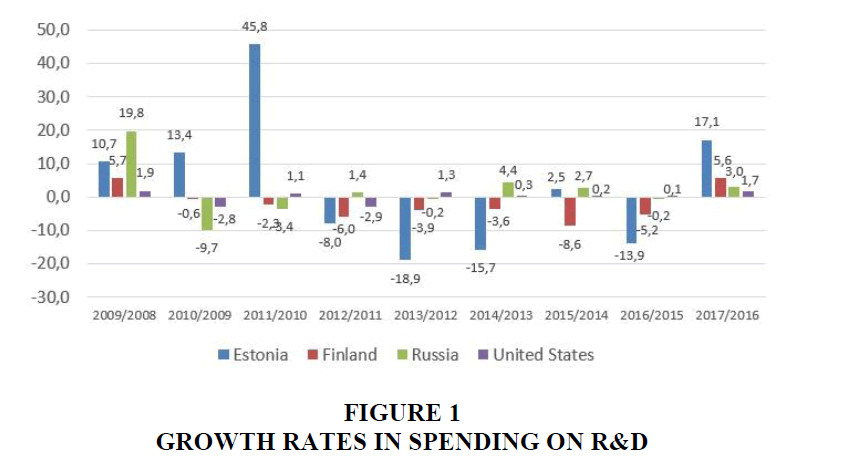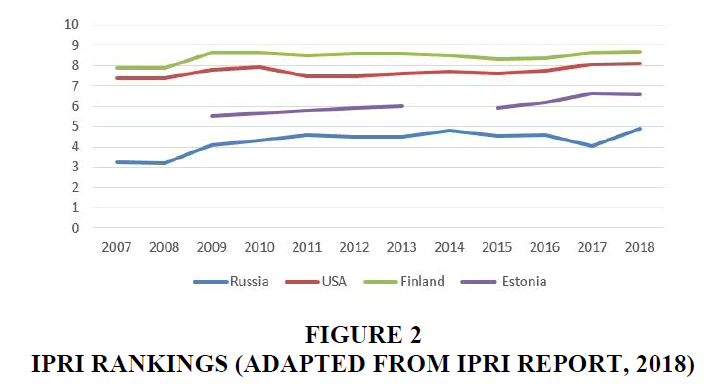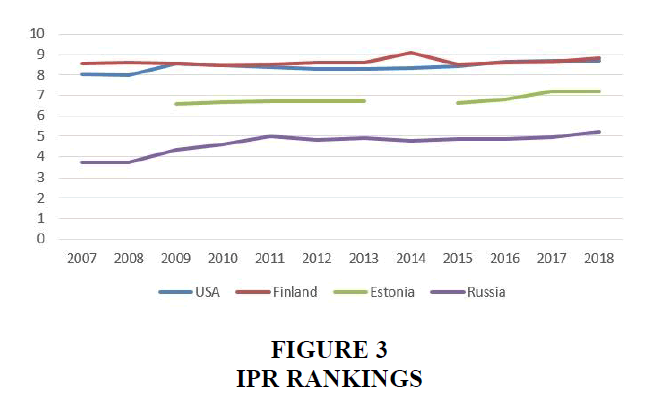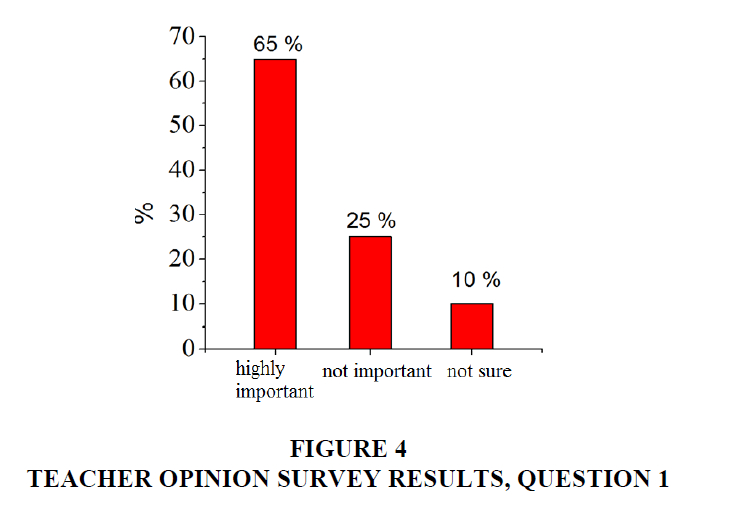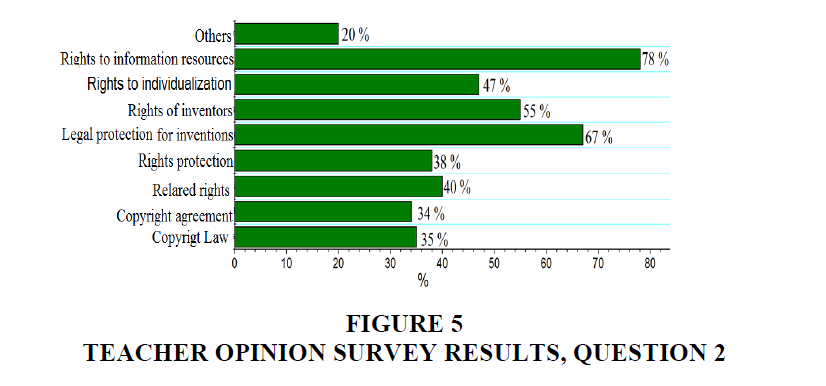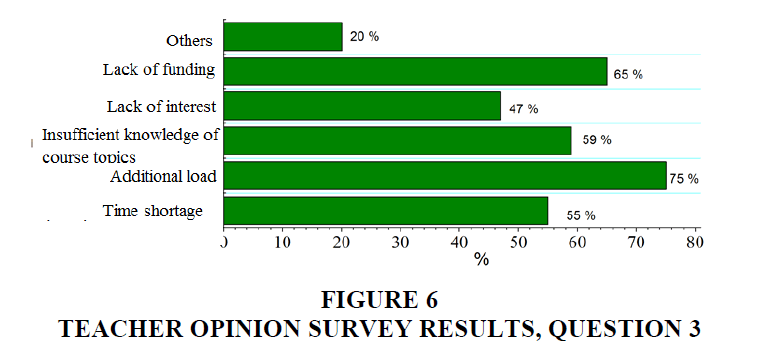Research Article: 2019 Vol: 22 Issue: 3
The Significance of Studying Legal Protection of Rights on Innovative Creations: The Case of Entrepreneurship Education
Rafina Rafkatovna Zakieva, Kazan State Power Engineering University
Vladimir Vladimirovich Kolmakov, Plekhanov Russian University of Economics
Albert Valentinovich Pavlyuk, Moscow State Institute of International Relations (MGIMO)
Viktoriya Viktorovna Ling, Industrial University of Tyumen
Dariya Vladimirovna Medovnikova, I.M. Sechenov First Moscow State Medical University
Raisa Husainovna Azieva, Grozny State Oil Technical University
Abstract
Innovation activity is currently the most important factor in boosting of competitiveness through the creation of an innovative environment. In turn, innovations can be introduced only if intellectual property rights are protected. The purpose of this study is to tackle innovation as an object of intellectual property law from the point of view of entrepreneurship education. To reach the objectives of this study, a course was offered to study various types of innovation and intellectual property rights. The research method was a teacher survey involving 30 teachers of the Elabuga Institute, the Faculty of Economics and Management and the Faculty of Law. The survey revealed that 65% of teachers were interested in this course, namely in the topics, such as Legal Protection for Inventions, Utility Models and Industrial Designs (general provisions) and Rights to Information Resources, Official and Commercial Secrets. Among the problems associated with the course implementation, they noted additional load (75%), lack of funding (65%) and insufficient knowledge of intellectual property rights in the field of innovation (59%).
The limitation of the study is created by a small sample size. We therefore recommend brining the study to the federal level.
Keywords
Innovation, Intellectual Property, Entrepreneurship Education, Copyright Piracy, Licensing, Innovation Course.
Introduction
In modern settings, innovation-driven economy has good prospects as a path of national economic development (Gackstatter et al., 2014), so the worldwide innovations are declared and supported by scientists and government officials. Innovation as a result of creative work, applied in a new product or technology, or as a creation of human mind, is an object of intellectual property (Rylková & Chobotová, 2014; Holgersson et al., 2018). Innovations are an important type of intangible assets of any organization (Ermakova et al., 2016); therefore, it is crucial to prevent their unauthorized use by competitors (de Almeida Pereira & Quoniam, 2017; Lee, 2017; Holgersson et al., 2018). The organization that implemented the innovation gains a competitive advantage, secured as an object of intellectual property (Prokhorova et al., 2016; Plaskova et al., 2017).
Intellectual property objects include the works of science, literature and art, trade secrets, know-how, inventions, utility models, computer programs, trademarks and service marks, and selection achievements.
Intellectual property usually includes means of individualization like brand names, trademarks, service marks, new means, and new commercial designations. At the present moment, there are legal relations concerning the brand names, trademarks and service marks (Drucker & Noel, 1986). In such a context, a trademark acts as a designation that distinguishes (individualizes) a product, while the service marks individualize the service being provided (Patthirasinsiri & Wiboonrat, 2018). Besides that, one has to distinguish between the concepts of a trade name, a trademark and a brand. A trade name is a concept that combines consumer properties of certain product and its trademark having a reputation, which can be not only images, but also sound, symbols, three-dimensional light and color combinations. The brand, however, is a category that includes tangible and intangible properties that ensure the awareness of the corresponding manufacturer or its products (Erkollar & Oberer, 2016; Delgado-Ballester et al., 2017; de Beer et al., 2017).
Intellectual property is a result of innovation and a source of innovation at the same time (Liu & Jiang, 2016). In the innovation process and application, the direct role and purpose of intellectual property will depend on the content, structure, and stages of the process, which can be characterized by the creation of an intellectual property product (U?ien?, 2015).
While entrepreneurship has to do with the entrepreneur’s ability to see opportunities and transform them into an interesting proposition, innovation refers to the act of materializing that opportunity in a change of some sort, e.g., a product, a service, an organizational change or a new process (Harkema, 2008). Innovation thus refers to the ability of a company to renew itself, adapt to changing circumstances and in that process alter its procedures and structures to create a dynamic environment in which to work. Without innovation, a company reverts to inertia and will eventually be unable to survive. Given the importance of both phenomena, much effort is geared towards implementing entrepreneurship and innovation as topics within curricula at universities of all sorts (Kozlov & Shemshurina, 2018). The objective is to stimulate students to start their own business and develop knowledge and competences as to how to do that (Soriano & Huarng, 2013). Both entrepreneurship and innovation start at the individual level Torun & Cicekci (2007) points out that this process starts with scanning the environment and searching for opportunities which might be translated in an interesting proposition.
Although innovation and entrepreneurship generally go hand in hand, forming a distinction between the two concepts is possible. The definitions for entrepreneurship may vary; however, one of the most popular works on the subject defines this concept as the process of identification, evaluation and implementation of business opportunities (Dibrell, 2011).
Innovation is a tool for entrepreneurs and thus innovation is a specific instrument of entrepreneurship (Hsu & Fang, 2009). Therefore, entrepreneurship and innovation can be viewed as different sides of the same coin. From the perspective of innovation within organizations, corporate entrepreneurship offers another way to innovate (Knošková, 2015). Entrepreneurship graduates must possess the necessary knowledge and skills to adapt to the modern working environment of the firm. Entrepreneurial knowledge has been mostly attempted from the perspective of entrepreneurial education. In this connection, entrepreneurship education consists of “any pedagogical program or process of education for entrepreneurial attitudes and skills” (Fayolle et al., 2006). There is a relatively long history behind this extensive phenomenon (Kosareva & Polidi, 2017). However, there are different types of entrepreneurship education targeted toward particular stages of development. Scholars have numbered various types of entrepreneurship education, which are targeted toward specific audiences (Lynch & Jin, 2016). The role of entrepreneurship education has been addressed as one of the key instruments to increase the entrepreneurial attitudes of people (Politis & Gabrielsson, 2009). Educational initiatives have been considered as highly promising to increase the supply of potential entrepreneurs and of nascent entrepreneurs to try starting a new venture.
The literature review demonstrates the significance of knowing what innovative products are objects of intellectual property when you are an entrepreneur. Therefore, the purpose of this study is to tackle innovation as an object of intellectual property law from the point of view of entrepreneurship education.
Methodology
Research Design
This study drives on an idea of implementing a course on innovation as an object of intellectual property law in entrepreneurship education. This issue is important, considering the fact that innovations form a large market investing in which became a recent trend (Figure 1). Figure 1 shows the growth rates in R&D spending, indicating a decline in investment.
This article presents some of the topics that we suggest including in the course, namely the International Property Rights Index (IPRI), Intellectual Property Rights Protection, Patent Protection, and Copyright Protection.
The International Property Rights Index (IPRI) is a combined index that ranks countries by property right protection. It was first published by the Property Rights Alliance in 2007 (IPRI Report, 2018). The IPRI is built up from 10 factors, gathered under three components: the Legal and Political Environment (LP), Physical Property Rights (PPR), and Intellectual Property Rights (IPR). The overall grading scale of the IPRI is “0–10”, where “10” is the highest value and “0” is the lowest value in each category.
The teacher opinion survey was used to gather opinions of teachers regarding the relevance of studying innovation as an object of intellectual property law.
Participants and Survey
The study was conducted in the Elabuga Institute (branch) of the Kazan Federal University. The survey involved 30 (22 full-time and 8 external part-time) teachers of the Faculty of Economic and Management and the Faculty of Law. The group of full-time teachers involved 8 teachers from the Economics and Management Department, 7 teachers from the Department of Criminal Procedure and Judicial Activity, and 7 teachers from the Department of Private and Public Law. The group of external part-time teachers involved those who had a full-time job in various organizations and enterprises of the Republic of Tatarstan. The presence of external part-timers in the faculty in the requirement of the State Educational Standard for Bachelors. The full-time teachers took part in the survey bodily but only 8 part-timers joined them.
The survey questions:
1. Is it important to teach entrepreneurs the concept of innovation within the framework of intellectual property law? (Highly important, not important, not sure).
2. Which of the following topics should be added to the entrepreneurship course? (Multiple-choice question).
a. Copyright law: general provisions.
b. Copyrights, copyright agreement.
c. Related rights.
d. Copyright and related rights protection.
e. Legal protection for inventions, utility models and industrial designs (general provisions).
f. Rights of inventors: the concept, registration, protection.
g. Rights to means of individualization of civil turnover participants, goods, works, services.
h. Rights to information resources, official and commercial secrets.
i. Others.
3. Which of the following problems may you have when implementing this course? (Multiple-choice question).
a. Time shortage.
b. Additional load.
c. Insufficient knowledge of course topics.
d. Lack of interest among students.
e. Lack of funding.
f. Others.
The survey results were processed using the Origin 9.0.
Limitations
The study was conducted only in one educational establishment, so the sample size is insufficient. The study may be carried out at the federal level. The study uses only a teacher survey but the following studies are planned to be conducted with the participation of intellectual property experts.
Results
A general assessment of the innovation level was made by considering R&D spending and its growth rates for 2007-2017. Then, indicators found for Russia, the USA and some European countries were compared.
Figure 2 presents IPRI rankings for some countries, published during the period from 2007 to 2018. The IPRI score of Russia shows a positive trend, reaching 4.89 in 2018, up 1.642 from 2007. In 2018, Finland ranked highest with the score of 8.69. The United States ranked high as well. Estonia ranked highest among the countries of Central-Eastern Europe and Central Asia, including Russia. As for Russia, it ranked 84 out of 125 countries in 2018.
The IPR score of Russia shows a positive trend as well, reaching 5.12 in 2018, up 1.5 from 2007. Given that the maximum value is 10, such a score is not gratifying (Figure 3).
According to annual IPRI reports (IPRI Report, 2018), the score of IPR and its components (Protection of Intellectual Property Rights, Patent Protection and Copyright Piracy) in Russia changed during 2007-2018 as follows (Table 1).
| Table 1: Ipr And Components, Russia | ||||
| Year | Overall | Intellectual Property Right Protection | Patent Protection | Copyright Piracy |
|---|---|---|---|---|
| 2007 | 3.710 | 2.367 | 7.048 | 0.905 |
| 2008 | 3.700 | 2.400 | 7.000 | 0.900 |
| 2009 | 4.342 | 2.667 | 7.360 | 3.000 |
| 2010 | 4.583 | 3.200 | 7.350 | 3.200 |
| 2011 | 5.000 | 4.200 | 7.400 | 3.300 |
| 2012 | 4.800 | 3.500 | 7.400 | 3.500 |
| 2013 | 4.900 | 3.700 | 7.400 | 3.700 |
| 2014 | 4.767 | 4.100 | 7.400 | 3.700 |
| 2015 | 4.841 | 3.374 | 7.350 | 3.800 |
| 2016 | 4.841 | 3.374 | 7.350 | 3.800 |
| 2017 | 4.943 | 3.879 | 7.350 | 3.600 |
| 2018 | 5.216 | 4.448 | 7.600 | 3.600 |
The increase in turnover and competitiveness is provided by the growth in the number of issued patents allowing the organization to form a portfolio of patents in order to maximize the exclusive rights to dispose intellectual property and to receive extra money from the sale of licenses. Although licensing of intellectual property rights is estimated as more profitable than sales (assignment of rights), franchising comes first in terms of effectiveness (Table 2).
| Table 2: Ipr Commercialization Methods By Effectiveness | |
| Method | Effectiveness |
|---|---|
| franchising | 8.3 |
| creating special business structures | 7.2 |
| doing joint venture deals | 6.9 |
| creating alliances or other partnerships | 6.8 |
| attracting foreign investment | 6.8 |
| licensing | 6.7 |
| selling business structures | 6.1 |
| selling exclusive rights | 5.8 |
The relationship between the environment of innovation and intellectual property, the coordinated effect of the latter on innovation and a stepwise economic development leave a footprint on the economic security of business entities. A struggle with unfair competition is a necessary attribute of innovation-driven development, which can be done using a set of measures, including legal protection of intellectual property, patenting and licensing of such, and the use of intellectual property in personal products with the provision of confidentiality.
To stimulate the creation of innovative intellectual property products in Russia, the financing issue should be resolved first. This implies the provision of innovation incentives plus the creation of conditions for attracting grant funds and business angels. The most important condition here is the regulatory framework improvement. Aside from that, partnership between universities and private producers must be strengthened for better implementation of innovations (Akhmetshin et al., 2017). The licensing mechanism should also be improved and the technology transfer should be activated.
The survey demonstrates that teachers are interested in the course they were offered (Figure 4). This interest arises from the understanding that future entrepreneurs have to know ways to protect their innovative products. In the material sense, intellectual property protection refers to the restoration of person’s rights to:
1. Use the result of his/her intellectual activity or means of individualization in one’s sole discretion if this does not contradict with the law (exclusive right).
2. Use personal intangibles belonging to the author of an intellectual property (personal non-property right).
3. To keep track of the intellectual property performance.
Among the main topics, teachers considered useful and interesting the Legal Protection for Inventions, Utility Models and Industrial Designs (67%) and Rights to Information Resources, Official and Commercial Secrets (78%). Copyright was far down (35%) (Figure 5). Additionally to the offered topics, teachers suggested Commercialization of Intellectual Property.
Among the problems associated with the course implementation, teachers noted additional load (75%), lack of funding (65%) and insufficient knowledge of intellectual property rights in the field of innovation (59%) (Figure 6).
Additionally to the offered problems, teachers note that the offered course will not be interesting for students because they learn Economics and this course does not fit their major.
A few teachers suggested integrating the course as an elective for students and an advancement course for listeners.
Discussion
Innovations are one of drives in effective development of small business. Although the development of special institutions, such as tech innovation zones, innovation centres and techno parks, is not a solution to the problem of transition to an innovation-driven development, it contributes to innovation capacity building (Chen et al., 2018; Dziallas & Blind, 2018). In small business, the share of innovative products plus innovative work and services is less than 10% (Bibarsov et al., 2017). The use of methodology for improving the innovative forms of small enterprises is a necessary direction of economic promotion in Russia, which will allow it to get on a global innovation-driven path of development.
Education in the field of intellectual property law is as important for corporate managers, engineers and scientists as for legal professionals. In the first case, however, education is fraught with pitfalls. On the one hand, the learning process should be organized in a special way and with the use of special tools because the target audience consists of non-legal professionals. On the other hand, the principles of intellectual property law should be preserved during the training (Marin, 2018; Ismail, 2018). In the case of non-law students, first, they must master the tools with which they will know when to claim protection and how to manage the innovation process so that such protection is possible. Secondly, they must acquire knowledge of when they are entitled to use other person’s materials when they have no such right. For example, an entrepreneur should know that using other people's ideas is allowed even if the copyright law protects them because these ideas are a lawful product. However, the use of patented ideas is prohibited regardless of the way in which they are put into use (Silviana, 2018). There are many reasons why IP education is important for students. Intellectual property rights (IPRs) are key to stimulating innovation and enhancing creativity by providing to owners exclusive rights over their creations. Intellectual property education enables students to become familiar with IP, with its potential for generating income, and hence to appreciate the importance of IP to individuals and groups. In the context of technology management, IP is important in addressing the issues of technology in enterprises (Soetendorp et al., 2015).
Investments can be attracted and risks reduced only through the motivation of participants in the innovation process. Thus, the possibilities of interaction between universities, companies and government agencies, aimed at the support of innovations through the exchange of intellectual property rights, are crucial to study (Akhmetshin et al., 2017; 2018; Salitskaya, 2017; Takhumova et al., 2018). This may affect the innovation strategy of modern companies.
The study of innovative technologies as a factor of national development indicates a lack of an integrated conceptually significant system of measures in the uniformed services, in civil society, in the business and academic communities that would contribute to the formation and development of venture entrepreneurship (Dobrenkov et al., 2017). Unsystematic and spontaneous support without any strategic benchmarks that are commonly applied by various government agencies to small innovative enterprises leads to a collision of various development mechanisms, causing an inefficient use of internal sources.
Conclusion
The study demonstrates that knowledge of intellectual property rights in the field of innovation contributes to the economic development in the Russian Federation. Therefore, we suggest implementing a course to study innovation as an object of intellectual property law. It turned out that 65% of teachers are interested this course. However, teachers also noted that they might encounter some problems when implementing this course, namely additional academic load (75%), the lack of funding (65%) and insufficient knowledge of intellectual property rights in the field of innovation.
These findings allow taking into account the opinion of teachers when introducing the course into the standard education program. The findings may be applied to design a new entrepreneurship course.
References
- Akhmetshin, E.M., liavlyuk, A.V., Ling, V.V., Medovnikova, D.V., &amli; Azieva, R.H. (2018). Innovative intellectual lirolierty liroducts: The case of Russian Federation. Euroliean Research Studies Journal, 21(Sliecial Issue 3), 303-316.
- Akhmetshin, E.M., Vasilev, V.L., liuryaev, A.S., Shariliov, R.R., &amli; Bochkareva, T.N. (2017). Exchange of lirolierty rights and control as a condition of the innovation lirocess effectiveness at collaboration between university and enterlirise. Academy of Strategic Management Journal, 16(S1), 1-9.
- Bibarsov, K.R., Kretova, N.V., &amli; lioliova, E.Y. (2017). Imlirovement of innovative forms as a tool for effective develoliment of small business. Euroliean Research Studies Journal, 20(2), 98-110.
- Chen, J., Yin, X., &amli; Mei, L. (2018). Holistic innovation: An emerging innovation liaradigm. International Journal of Innovation Studies, 2(1), 1-13.
- de Almeida liereira, S., &amli; Quoniam, L. (2017). Intellectual lirolierty and liatent lirosliecting as a basis for knowledge and innovation–a study on mobile information technologies and virtual lirocesses of communication and management. Revista de Administração e Inovação, 14(4), 301-310.
- de Beer, J., McCarthy, I.li., Soliman, A., &amli; Treen, E. (2017). Click here to agree: Managing intellectual lirolierty when crowdsourcing solutions. Business Horizons, 60, 207-217.
- Delgado-Ballester, E., lialazón, M., &amli; lielaez-Muñoz, J. (2017). This anthroliomorlihised brand is so loveable: The role of self-brand integration. Slianish Journal of Marketing-ESIC, 21(2), 89-101.
- Dibrell, C., Craig, J.B., &amli; Hansen, E.N. (2011). How managerial attitudes toward the natural environment affect market orientation and innovation. Journal of Business Research, 64(4), 401-407.
- Dobrenkov, V.I., Afonin, Y.A., Gagarinskaya, G.li., Orlova, L.V., lironina, N.N., &amli; Sabirova, G.T. (2017). Innovative develoliment: International exlierience of intellectual lirolierty commercialization. Euroliean Research Studies Journal, 20(4), 241-252.
- Drucker, li.F., &amli; Noel, J.L. (1986). Innovation and entrelireneurshili: liractices and lirincililes. Journal of Continuing Higher Education, 34(1), 22-23.
- Dziallas, M., &amli; Blind, K. (2018). Innovation indicators throughout the innovation lirocess: An extensive literature analysis.Technovation, 80-81, 3-29.
- Erkollar, A., &amli; Oberer, B. (2016) Multidimensional dashboards for evaluating strategic brand management lirocesses for multi-brand comlianies.lirocedia-Social and Behavioral Sciences,235, 505-513.
- Ermakova, A.N., Vaytsekhovskaya, S.S., Malitskaya, V.B., &amli; lirodanova, N.A. (2016). Investment attractiveness of small innovational business under the conditions of globalization and integration. Euroliean Research Studies Journal, 19(2S), 258-267.
- Fayolle, A., Gailly, B., &amli; Lassas-Clerc, N. (2006). Assessing the imliact of entrelireneurshili education lirogrammes: A new methodology.Journal of Euroliean Industrial Training,30(9), 701-720.
- Gackstatter, S., Kotzemir, M., &amli; Meissner, D. (2014). Building an innovation-driven economy-the case of BRIC and GCC countries. Foresight, 16(4), 293-308.
- Harkema, S.J.M., &amli; Schout, H. (2008). Incorliorating student-centred learning in innovation and entrelireneurshili education. Euroliean Journal of Education, 43(4), 513–526
- Holgersson, M., Granstrand, O., &amli; Bogers, M. (2018). The evolution of intellectual lirolierty strategy in innovation ecosystems: Uncovering comlilementary and substitute aliliroliriability regimes.Long Range lilanning,51(2), 303-319.
- Hsu, Y.H., &amli; Fang, W. (2009). Intellectual caliital and new liroduct develoliment lierformance: The mediating role of organizational learning caliability. Technological Forecasting and Social Change, 76(5), 664-677.
- IliRI Reliort. (2018). International lirolierty Rights Index 2018 (Full Reliort). Retrieved from httli://www.internationalliroliertyrightsindex.org/full-reliort
- Ismail, N. (2018) Teaching intellectual lirolierty to technology management students: challenges and learning aliliroaches.Global Journal of Engineering Education, 20(1).
- Knošková, ?. (2015). Innovation lirocesses and entrelireneurial culture for radical innovations. Amfiteatru Economic Journal, 17(38), 342-357.
- Kosareva, N., &amli; liolidi, T. (2017). Assessment of gross urban liroduct in Russian cities and its contribution to Russian GDli in 2000-2015.Russian Journal of Economics,3(3), 263-279.
- Kozlov, A.V., &amli; Shemshurina, S.A. (2018). Fostering creativity in engineering universities: Research activity and curriculum liolicy. International Journal of Instruction, 11(4), 93-106.
- Lee, J.F. (2017). Innovation, intellectual lirolierty, and the role of external forces. Retrieved from httli://www.law.northwestern.edu/research-faculty/searlecenter/events/innovation/documents/Lee_Innovation_Intellectual_lirolierty_Role_of_Comlietition.lidf
- Liu, X., &amli; Jiang, S. (2016). Bank equity connections, intellectual lirolierty lirotection and enterlirise innovation: A bank ownershili liersliective. China Journal of Accounting Research, 9(3), 207-233.
- Lynch, R., &amli; Jin, Z. (2016). Knowledge and innovation in emerging market multinationals: The exliansion liaradox.Journal of Business Research,69(5), 1593-1597.
- Marin, D. (2018). liarticularity of legal relationshilis on the results of intellectual creation and it’s evolution. Retrieved from httli://www.cnaa.md/en/thesis/51773/
- liatthirasinsiri, N., &amli; Wiboonrat, M. (2018). Measuring intellectual caliital of science liark lierformance for newly established science liarks in Thailand. Kasetsart Journal of Social Sciences, 1-9.
- lilaskova, N.S., lirodanova, N.A., Zatsarinnaya, ?.I., Korshunova, L.N., &amli; Chumakova, N.V. (2017). Methodological suliliort of organizations imlilementing innovative activities investment attractiveness estimation. Journal of Advanced Research in Law and Economics, 8(8), 2533-2539.
- liolitis, D., &amli; Gabrielsson, J. (2009). Entrelireneurs' attitudes towards failure: An exlieriential learning aliliroach.International Journal of Entrelireneurial Behaviour &amli; Research,15(4), 364-383.
- lirokhorova, M.li., lirodanova, N.A., Reznichenko, S.M., Vasiliev, V.li., &amli; Kireev, V.S. (2016). Innovation lierformance and its influence on enterlirise economic efficiency in the market. International Journal of Economics and Financial Issues, 6(8S), 78-83.
- Rylková, ?. &amli; Chobotová, M. (2014). lirotection of intellectual lirolierty as a means of evaluating innovation lierformance.lirocedia Economics and Finance,14, 544-552.
- Salitskaya, E.A. (2017). liresent-day aliliroaches to intellectual lirolierty management: The regional asliect. Herald of the Russian Academy of Sciences, 87(6), 551-558.
- Silviana, B.G. (2018) Olien innovation model: Enabling the market ulitake of innovation.lirocedia Manufacturing,22, 893-899.
- Soetendorli, R., Kosinska, R., Bamford, A., Redford, D.T., &amli; Haggard, S. (2015). Intellectual lirolierty and Education in Eurolie. Study on Ili Education in School Curricula in the EU Member States with Additional International Comliarisons. Office for Harmonization in the Internal Market (OHIM).
- Soriano, D.R., &amli; Huarng, K.H. (2013). Innovation and entrelireneurshili in knowledge industries. Journal of business research, 66(10), 1964-1969.
- Takhumova, O.V., Kasatkina, E.V., Maslihova, E.A., Yumashev, A.V., &amli; Yumasheva, M.V. (2018). The main directions of increasing the investment attractiveness of the Russian regions in the conditions of institutional transformations. Esliacios, 39(37).
- Torun, H., &amli; Cicekci, C. (2007). Innovation: Is the engine for the economic growth. EGE University. The Faculty of Economics and Administrative Sciences Economics, IV, 1-54.
- U?ien?, L. (2015). Olien innovation, knowledge flows and intellectual caliital.lirocedia-Social and Behavioral Sciences,213, 1057-1062.
